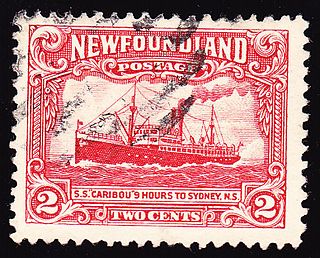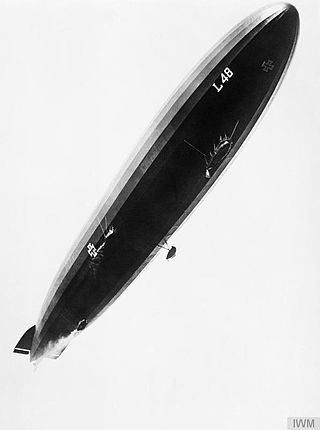
Lucy Dawidowicz was an American historian and writer. She wrote books about modern Jewish history, in particular, about the Holocaust.
Richard Fairchild Newcomb was a wartime naval correspondent during World War II and received a Purple Heart. He was a news editor of the Associated Press and the author of a number of books on the battles in the Pacific during the Second World War, including Abandon Ship!, Savo, in particular Iwo Jima, an account of the Battle of Iwo Jima.
Leften Stavros Stavrianos was a Greek-Canadian historian. His most influential books are considered to be A Global History: From Prehistory to the 21st Century and The Balkans since 1453. He was one of the first historians to challenge Orientalist views of the Ottoman Empire.

SS Caribou was a Newfoundland Railway passenger ferry that ran between Port aux Basques, in the Dominion of Newfoundland, and North Sydney, Nova Scotia between 1928 and 1942. During the Battle of the St. Lawrence the ferry participated in thrice-weekly convoys between Nova Scotia and Newfoundland. A German submarine attacked the convoy on 14 October 1942 and Caribou was sunk. She had women and children on board, and many of them were among the 137 who died. Her sinking, and large death toll, made it clear that the war had really arrived on Canada's and Newfoundland's home front. Her sinking is cited by many historians as the most significant sinking in Canadian-controlled waters during the Second World War.

Colonel Charles Perry Stacey was a Canadian historian and university professor. He served as the official historian of the Canadian Army in the Second World War and published extensively on military and political matters.

This is a bibliography of major works on the History of Canada.

The military history of Canada during World War I began on August 4, 1914, when the United Kingdom entered the First World War (1914–1918) by declaring war on Germany. The British declaration of war automatically brought Canada into the war, because of Canada's legal status as a British Dominion which left foreign policy decisions in the hands of the British parliament. However, the Canadian government had the freedom to determine the country's level of involvement in the war. On August 4, 1914, the Governor General declared a war between Canada and Germany. The Militia was not mobilized and instead an independent Canadian Expeditionary Force was raised.

In typography, a margin is the area between the main content of a page and the page edges. The margin helps to define where a line of text begins and ends. When a page is justified the text is spread out to be flush with the left and right margins. When two pages of content are combined next to each other, the space between the two pages is known as the gutter. The top and bottom margins of a page are also called "head" and "foot", respectively. The term "margin" can also be used to describe the edge of internal content, such as the right or left edge of a column of text.

The Valour and the Horror is a Canadian television documentary miniseries, which aired on CBC Television in 1992. The series investigated three significant Canadian battles from the Second World War and was a co-production between the CBC, the National Film Board of Canada (NFB) and Galafilm Inc. The films were also broadcast by Radio-Canada, the French network of the CBC. The series was written by Brian McKenna, an award-winning journalist and founding producer of The Fifth Estate and his brother, Terence McKenna, and was directed by Brian McKenna.

Felix Johan Douma was a Canadian scholar, writer, teacher, cellist, and translator who once served as Canada's Third Secretary and Vice-Consul to the Dominican Republic.
Robert George Leeson Waite was a Canadian historian, psychohistorian, and the Brown Professor of History (1949–1988) at Williams College who specialized in the Nazi movement, particularly Adolf Hitler.
Bernard Stanley Bachrach was an American historian. He taught history at the University of Minnesota from 1967 until his retirement in 2020. He specialized in the Early Middle Ages, mainly on the topics of medieval warfare, medieval Jewry, and early Angevin history. He also wrote an important article about the treatment of Jews in the Visigothic kingdom.
Eva-Lis Wuorio was a Finnish-born writer. She was born in Viipuri, Finland and her family emigrated to Canada, where she was educated. She later moved to the Channel Islands. She wrote principally for children and young adults.
John Francis Bannon was a Jesuit and a historian of the American West, especially of matters related to the Spanish borderlands.
William Alexander Binny "Alec" Douglas is a Canadian naval historian, who was director of Directorate of History, National Defence Headquarters (Canada), 1973–1993, then director general history, 1993–94.

Death by Moonlight: Bomber Command is an episode of the 1992 Canadian The Valour and the Horror television documentary miniseries, and was a co-production between the Canadian Broadcasting Corporation (CBC), the National Film Board of Canada (NFB) and Galafilm Inc. The series investigated three significant Canadian military engagements from the Second World War with Death by Moonlight: Bomber Command dealing with the experiences of Canadian pilots in the RAF Bomber Command.
No. 2 Squadron was a Royal Canadian Air Force (RCAF) squadron active during the late 1930s. The squadron operated army cooperation aircraft from 1935, and upon the outbreak of World War II was selected for overseas duty. However, a shortage of aircraft forced its disbandment in late 1939 to reinforce two other squadrons.

Zeppelin LZ 95 was a U-class zeppelin of the Imperial German Military.
Peter H. Brieger was a German art historian who emigrated to Canada in 1936 to escape persecution from the Nazi regime because of his Jewish family background. He taught at the University of Toronto from 1936 to 1969, was Head of the Department of Fine Art from 1947 to 1964, and Chair from 1965 to 1969. He was a medievalist, specialising in 12th and 13th century manuscripts.









